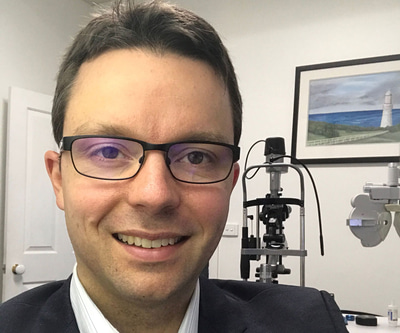- OT
- Life in practice
- Practitioner stories
- Coronavirus: on the ground in Australia
Coronavirus: on the ground in Australia
Optometrist Leigh Plowman on keeping connected during lockdown and providing eye care to the town of Colac (population: 13,000)

Leigh Plowman
26 June 2020
As the coronavirus (COVID-19) pandemic transforms the way optometrists practise, OT is sharing the experiences of optometrists across the UK and beyond. If you, or a colleague, is interested in sharing your story please get in touch by email.
In a nutshell
Location: Colac, Australia
Years qualified: 13
Mode of practice: optometrist
I work in an independent practice with one other full-time optometrist and eight dispensing staff. Initially we were hearing reports from overseas of COVID-19 cases. Fairly rapidly the Government decided to step up restrictions. It seemed that every two days there was a new level of social distancing or closures.
When we first started having COVID-19 cases in Australia, we had a meeting with the team and talked about how we could move forward and what we needed to do. We tried to make the best use of limited information and postponed routine appointments. Around that time, the Government began putting messages out telling people to stay home and avoid going out unless you had to.

During lockdown, we mainly saw patients with sore eyes, foreign bodies, infections and broken glasses. We did not do routine appointments. My colleague and I would alternate, with each of us doing half days. After one of the local corporate optometry practices closed we had a lot of referrals from general practitioners.
When we were not able to offer routine appointments, I would go into the practice but we encouraged patients to call up first. The patient would be triaged over the phone and if they were well then we would make an appointment. The guidance for us was to limit the face-to-face time to 15 minutes during lockdown. We would have half hour appointments; 15 minutes with the patient and 15 minutes to finish cleaning and get ready for the next patient. In the consult room, we realized how many things we touched per patient. There was so much to clean! Of course, we had hand sanitiser that we encouraged everyone to use upon entry. We would try to limit the number of staff and patients in the practice to four at any one time.
The State Government set a target of 100,000 coronavirus tests before they started easing restrictions. There was also a focus on contact tracing in order to identify pockets of infection. Because Australia was swift with its lockdown, it gave the intensive care units more time to get ready, and the Government more to time to develop testing alongside a contact tracing app. It seems that the Government has been prudent so far.
The three Eastern states, New South Wales, Victoria and Queensland, were the states with the most infections. Initially, the largest number of infections in Australia was from returning travellers. There was some community transmission as well.
In terms of patient volumes as routine practice returns, it is partly reliant on the patients themselves and their own comfort levels in coming into practice. In the area where I practice, we did not have a COVID-19 case until May.
Even though there have been few cases, patients may have a sense of uncertainty. We need to address those fears as we move forward with routine testing
Colac is a town of around 13,000 people so it is relatively small. Even though there have been few cases, patients may have a sense of uncertainty. We need to address those fears as we move forward with routine testing.
During lockdown, I hosted a brainstorming session for optometrists via Zoom. We discussed things like limiting costs and keeping our practices going. As well as optometrists from Victoria, there were optometrists from Queensland, New South Wales, New Zealand and Nigeria. It was encouraging to know that we are all in the same boat and also for us to feel like we could do something.
There have been Government stimulus packages for the business. There is also a JobKeeper Payment where full-time and part-time staff are paid $1500 a fortnight. That has been really helpful for my team and my family.
Although it has been a difficult period for the practice, it has also been rewarding spending more time with my kids. I have four little ones. I have enjoyed taking them for a bike ride, doing some star jumps or reading a book with them. It’s hard to imagine having as much quality time together otherwise. Although coronavirus shutdowns were hard, family time was a highlight.
Another highlight was seeing patients for face-to-face care. With social distancing and staying at home, it made each face-to-face conversation more valuable. It was great to hear about my patients’ journeys through social distancing/isolation.
When school resumed, my colleagues were able to resume work. Our practice has been very busy – our days are full with patients. Before you know it, it’s time to clean up for the day and head home.
Coronavirus has helped me value time with my patients and family. Connecting with others is so important.
Advertisement

Comments (0)
You must be logged in to join the discussion. Log in